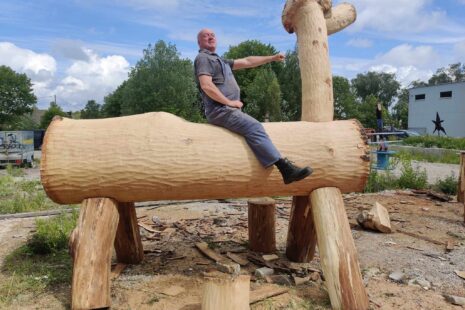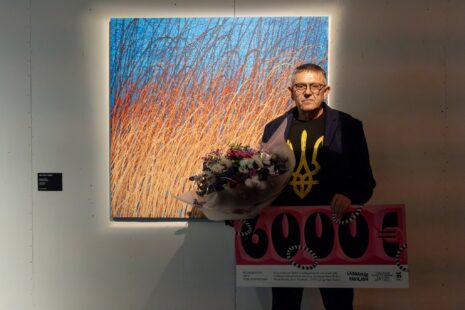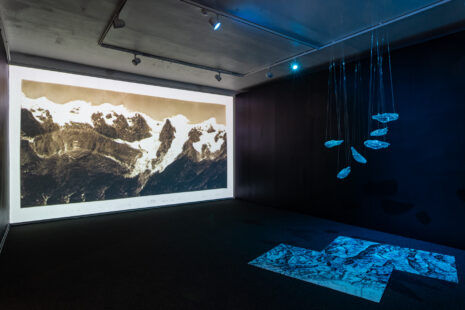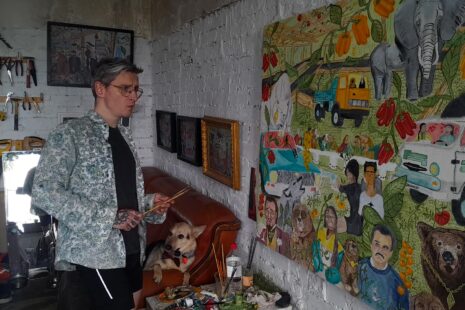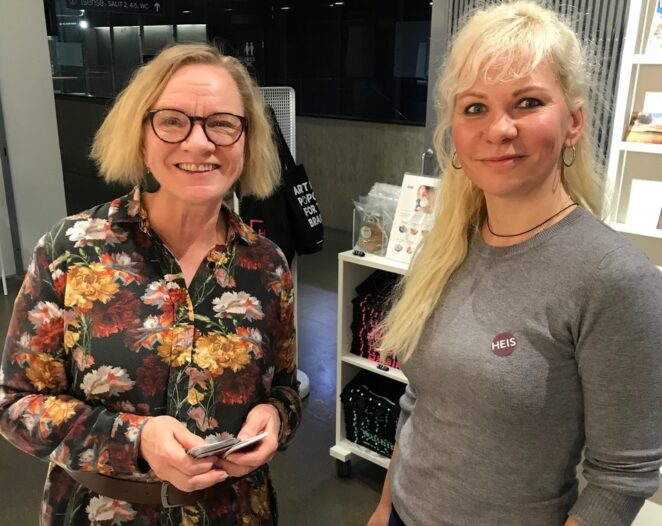
Photo by Anne Klontz. Pirkko Siitari and Andra Orn
Why is there a need for a new biennial in Helsinki?
It is important to have a new platform for local artists, it offers a possibility to create new artworks through commissions as well as to exhibit them. It is also a tool to attract a wider audience – that’s what we have seen happening in Vallisaari island where different people who usually don’t go to contemporary art exhibitions have come to the island.
Does a biennial have a different symbolic meaning than an exhibition has?
Biennial takes place every second year and otherwise, it can be whatever you want it to be, so it’s not limited in any way. Biennial can always have its own characteristic, it doesn’t have to be similar to others.
When it comes to other projects that HAM has initiated it is very different, because it is much larger, with 41 artists or artist groups and also because it is taking place in Vallisaari island which is a very specific location for art presentations. Even though the biennial is different and a new activity of HAM, HAM`s experience of curating and producing public art and exhibitions has been important in the making of this big event.
How did Helsinki biennial idea come to alive?
It has been discussed already for years why there is no bigger international art event in Helsinki. We started planning this biennial concretely in 2018 and it became a part of the Helsinki City strategy which includes a new maritime strategy where the aim is to open up nearby islands to the public. The fact that the city was eager to establish biennial together with HAM was the starting point.
What does this biennial have to offer to our region that we already do not have?
I think it offers a lot to Finland but also to the nearby regions. Biennial can always offer a new art experience, visibility to the artists but also a different kind of audience encounters with art and nature together. It is always interesting to have a new platform for arts and this is an important addition to the existing and vibrant art life in Helsinki.
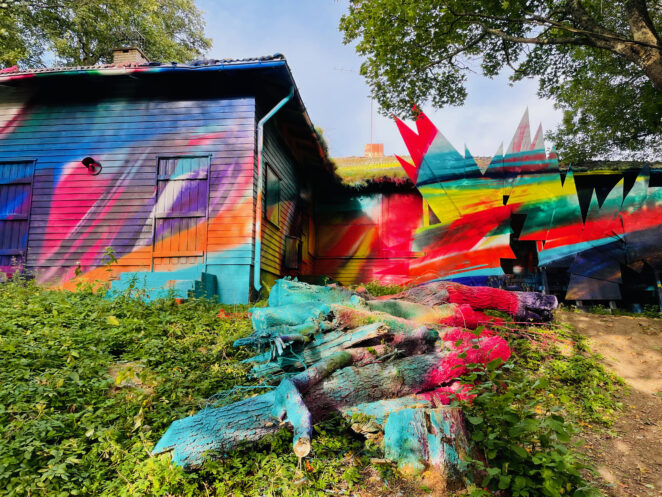
Photo by Andra Orn. Helsinki biennial, artwork by Katharina Grosse
Connection with other biennials in the world – to whom would you compare yourself or set an example?
We searched a lot for other biennials, also visited some of them and interviewed people who have been working with this format. For example, we visited Liverpool Biennial to whom we can compare Helsinki Biennial, because they are also using public space as one of the platforms for arts.
How do you plan to differ from other biennials?
When it comes to the location the Vallisaari island offers totally different kind of visiting experience, but it also inspired artists to deal with topical issues. Of course, a big presence of local artists is something you can’t find in the case of any other biennial in the world. Already, in the beginning, we decided that half of the participating artists will be from Finland and another half we would invite from all over the world. We didn’t really think that this biennial would be any kind of representational set of countries. We paid attention to the artist practices and we wanted to be sure that they respond to this environment. We invited most of the artists to create new site-specific works and in this sense, we wanted them already to have similar experiences from other projects, or we already had collaborated with them through other projects.
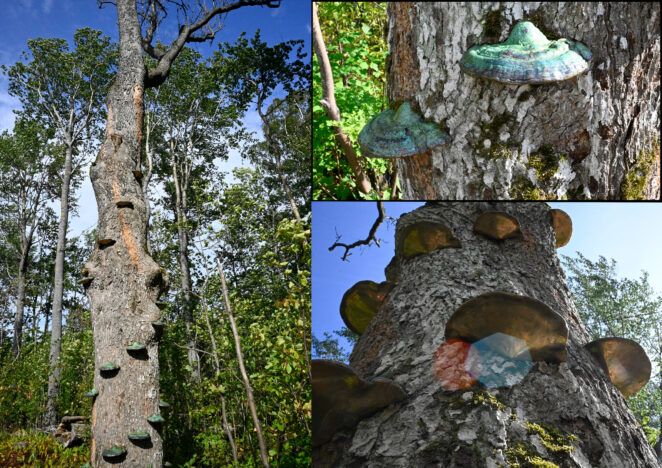
Photo by Andra Orn. Helsinki biennial
How many new artwork commissions did you make?
70% were new commissions. When we selected existing artworks we thought about the environment so the intention was that they need to be in dialogue with the island and get new meanings from the location.
How has the biennial been funded and what was the budget?
Half of the biennial budget came from private foundations and a half from the city of Helsinki.
The three years budget was 7 million euros in total, but it also includes establishing costs of the biennial so it could continue in the future.
Helsinki Biennial was about to happen in 2020, you postponed it for a year. How did the changed situation influence the biennial?
We created more digital content to present the content because of the covid. Many things which we initially thought to create physically went online. On the other hand, it gave us and the artists more time to finish artworks and deepen the ideas, so in the end, I would say it was not a catastrophe.
Did you or your team ever consider calling the biennial off?
No, never, we always trusted that it will happen.
Was it difficult to rearrange the deadlines?
Of course, it is very difficult to make the contracts again and change the production work. Our biennial team worked hard for that.
Was it a clear decision to make the biennial with your own team and not, like most of the biennials, to invite a guest curator on board? Why?
It was quite clear already in the beginning that we needed to do the first edition by ourselves because the location is very demanding and we wanted to control all of the processes. I think it was a very good decision – we needed to establish the organization and the processes first, and now we are much wiser.
In the future, do you see that you have foreign curators on board?
Absolutely, I think it is necessary to have different curators with different interpretations, ideas, and ways of doing things, it is necessary to be open.
The environment is a leading theme of exhibitions happening all over the world but on the other hand, biennials have been criticised for leaving a big environmental footprint with newly commissioned artworks, people flying all over the world. How do you reflect on that?
Artists have talked about ecological issues already for decades and one of the topics of the biennial is our problematic relationship with nature. When we were invited to do the biennial we asked BIOS, an independent research unit, to make a survey of what kind of socio-economical impacts the biennial would have. We also invited them to up their research station on the island, presented their work, organised talks and lectures.
Ecology first of all matter of any production, we have to learn new things and unlearn old things also when making art events.
It is also a curatorial issue – from that point of view, all of the works were planned in the context of Vallisaari and have been evaluated from the perspective of nature preservation and conservation. It was necessary for this environment. Working with the commissions minimises the cost of transportation, so it is much lower than it might be in the case of other biennials who work with a same number of artists that we do. We also decided to place the artworks alongside the existing road, so we did not invite people to enter nature more than it was necessary.
Helsinki Biennial also complies with the EcoCompass environmental management system, which guides the art event from planning to implementation and ensures that everything is as environmentally friendly as possible.
EcoCompass, which was developed by the Finnish Association for Nature Conservation, is a system based on international standards on environmental management. In the summer, we were granted the EcoCompass certificate. It is given to an operator for three years at a time and an auditor monitors the achievement of the objectives.
What will happen to the island?
The island will remain as it was before we started working there, no artworks will be left there. Vallisaari is a former military island and it was closed until 2016 when was opened for the public. Vallisaari will continue its life as an open nature and history destination.
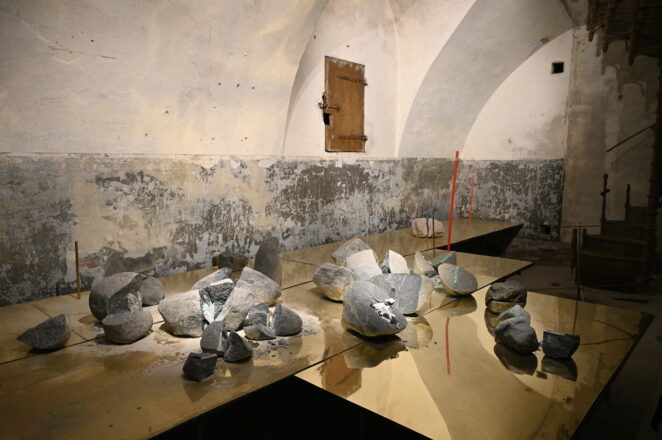
Photo by Andra Orn. Helsinki biennial
In the production process, did you think ahead about what will happen to the artworks after the biennial?
In the production process, you already have to think about what materials will you use, where do you find them, how much they cost and what do you do with them afterwards. We left nothing on the island because it was not a purpose to create a sculpture park there, all the artworks were taken away and some of the materials could be recycled as well.
Do you already have plans to show some of the artworks in other places in Helsinki?
Three of the artworks – two by Alicja Kwade and one by Laura Könönen – remain in our collection and will be placed somewhere on the mainland. They were originally produced to remain as public art pieces in the city. This was possible because Helsinki applies the per cent for art principle and HAM’s role is to curate these public art projects for the city.
What was the number of visitors at the biennial?
There were 145 000 visitors on the Vallisaari island, but some artworks were in HAM and in the city centre, we also had and still have interesting things online that people have visited – difficult to estimate what was the total number. Helsinki Biennial Inspired featured art and culture events inspired by the biennial, organised by the Helsinki cultural, youth, and senior centres as well as several art institutions. Altogether 90 000 people visited the various Helsinki Biennial Inspired events, exhibitions and workshops.
The maximum number that the island could have managed was 300 000 people, was that also the visitor expectation for the biennial?
After covid, all kinds of changes happened and expectations are different now. The fact is that we do not have that many visitors from abroad in Finland in general, so that has affected the situation, but actually we are very happy about the visitor numbers.
Who was the main visitor?
We have not done research on that, but I think we attracted people who normally do not go to the museums. We’ve been working on a large-scale impact assessment, which will be published in December. It also included customer research. Due to COVID, the emphasis was on local visitors, but the age distribution was much wider than normally among museum visitors.
How did you reach these audiences?
Interesting combination of nature and art. People during the covid pandemic missed encounters with art and they were looking for a connection with nature as well.
What kind of feedback have you got?
The media has been very positive about our content and visitors also have written feedback. There are three artworks that have got most of it – Tuomas A. Laitinen’s (FI) installation, Paweł Althamer’s (PL) VR movie, Janet Cardiff’s and George Bures Miller’s (CA) sound installation. We are also happy about how much the visitors gave us feedback during the biennial, as well as after it, via the customer research survey. The survey closes on 29 October.
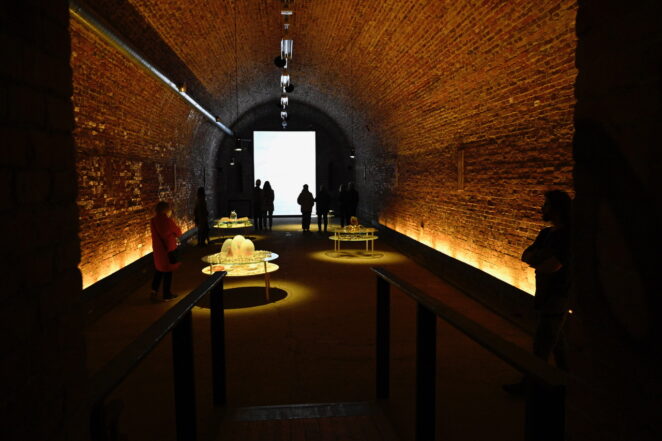
Photo Andra Orn. Helsinki Biennial. Artwork
by Tuomas A. Laitinen
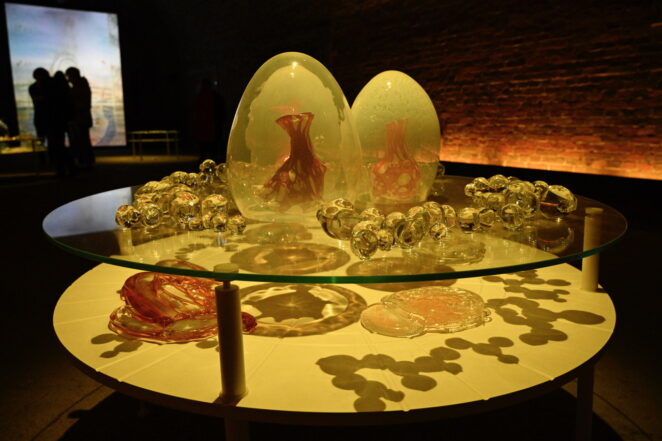
Photo Andra Orn. Helsinki Biennial. Artwork by Tuomas A. Laitinen
What are the key elements of these artworks that attract the public in this way?
I think Pawel’s virtual reality movie attracted many because it is serious and humorous at the same time and it deals with the different aspects of freedom. It also makes you feel like being part of everything that is happening. Its story is based on the collaboration with prisoners who are located on an island nearby. Pawel’s artistic practice usually consists of collaboration projects, so when we invited him to work here he immediately found a community of prisoners who worked for maintaining the island. He invited them to make a movie together. The story is about freedom, different aspects of it, not in a direct sense, but rather finding peace inside yourself and in nature.
What kind of goals you had set when you started this process?
To create a platform for meaningful art that can get new audiences from Finland and abroad, to give artists possibilities to create something new as well as to show their previous work, to bring up the notion of interconnectedness and mutual independence. It is part of a bigger framework and message of the biennial, it includes ecological crises, the location and the sea, and it reminds us that everything is connected, we are dependent on nature, on smaller pieces, on other human beings. We also wanted to highlight Helsinki as an interesting city to experience art in. Helsinki Biennial was free of charge for all Helsinkians and visitors in the city.
How do you feel, did you succeed?
Yes, I think so. We still need to evaluate everything, but we succeeded to create a fantastic experience for people with the first edition.
Future plans?
I hope the next edition will take place on the same island because it already has an existing infrastructure which is needed when organizing something, so it would be good if the biennial would root itself there. It is very near to the city centre, it has an existing road, fantastic buildings, nature and history – a great place for working in the future as well. Hopefully in the future artworks will be seen more on the mainland as well, since it improves the biennial’s accessibility.
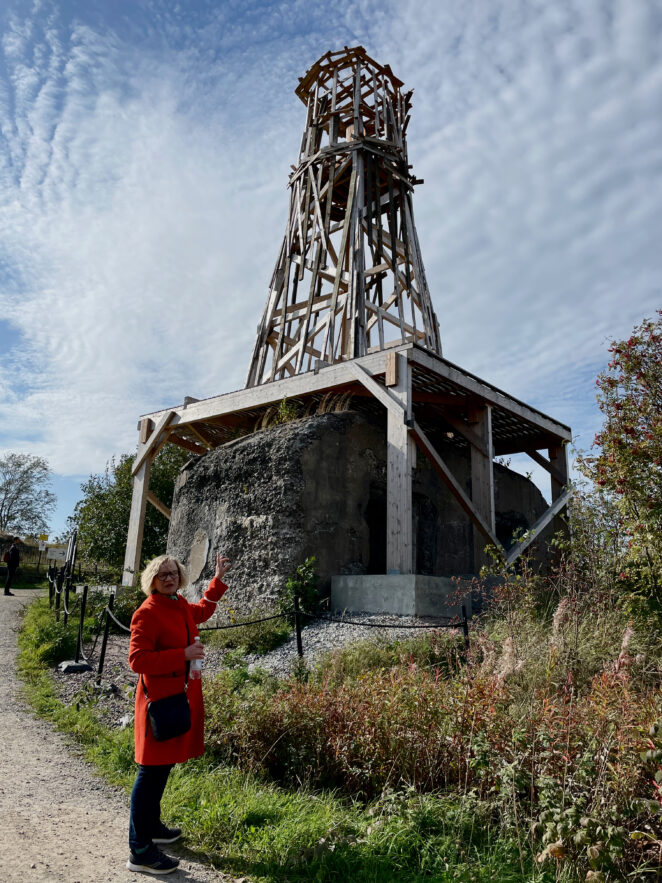
Phto by Andra Orn. Pirkko Siitari

